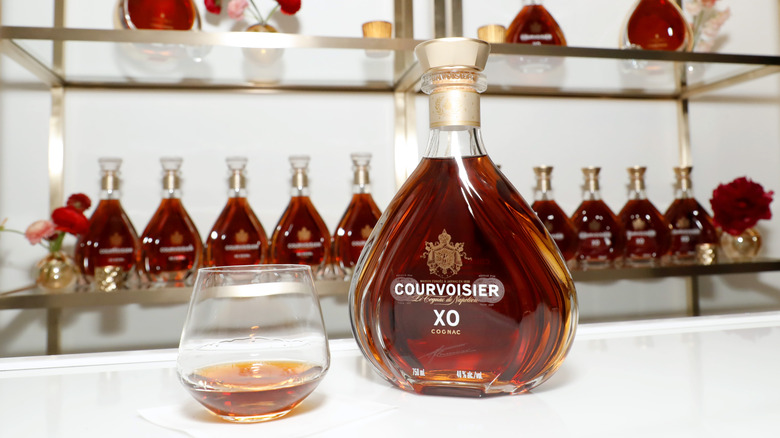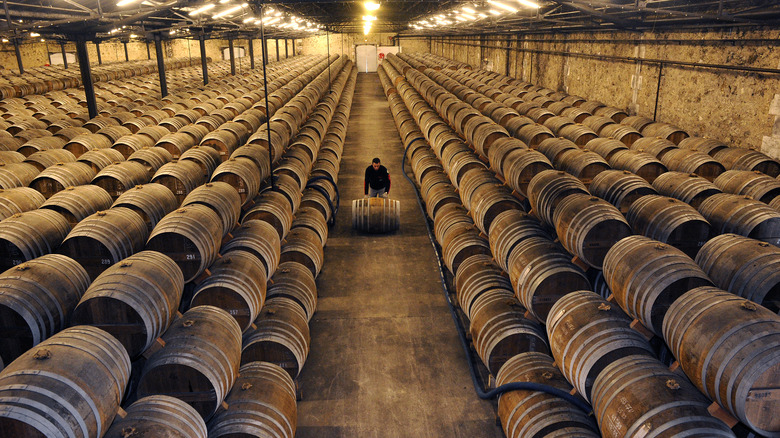What Is Napoleon Cognac And How Long Is It Aged?
Cognac, a type of brandy native to the idyllic hills of the Cognac region of France, is celebrated worldwide for its rich history and equally rich flavor. Just like any aged spirit, as you browse through the aisle in a liquor store, you'll find a variety of age statements printed on the label. The most common are the three acronyms VS (Very Special), VSOP (Very Superior Old Pale), and XO (Extra Old).
But browse for long enough and you'll come across other classifications, too, one of which should be "Napoleon" Cognac. Unlike the other three acronyms, a "Napoleon" is more of an unofficial age marker, but it's still widely used in the industry regardless — especially for bottling the popular Cognac House Courvoisier.
The name comes from, you guessed it, Napoleon Bonaparte, leader of the First French Empire. Supposedly, in the later years of his life when he was exiled to St. Helena island, It's said that Napoleon took crates of Courvoisier cognacs with him and those crates were labeled "Cognac Napoleon." However, some historians had dispelled this as a popular myth because, one, Courvoisier wasn't established until 1835 (when Napoleon died in 1821), and Napoleon was believed to never drink any alcohol. However, the story's not without substance. Napoleon did visit Félix-Joseph Courvoisier's brandy warehouse in 1809. This visit, it turns out, was the true origin of the marketing term that Courvoisier still uses today: the Brandy of Napoleon.
How is Napoleon cognac aged, exactly?
In the official aging scale, Napoleon cognac falls under the VSOP category, meaning it's been aged for at least four years. However, to earn the title of Napoleon, a cognac must mature for a minimum of six years. You can think of it as the midpoint between a VSOP (four years or more) and an XO (ten years and above).
This longer aging period allows for the development of deeper, more complex flavors and a smoother finish compared to your average VSOP. Other than the different aging times, though, the aging process remains the same as any other cognac: the eau-de-vie is placed in oak barrels and left to mature in specially designed warehouses for six years or more, where it absorbs the woody nuances from the barrels.
Today, almost every major brand offers its version of Napoleon cognac, including Hennessy, Remy-Martin, Martell, and, of course, Courvoisier. For a taste of history (or as close as you can get, considering how Napoleon wasn't a big fan of alcohol), consider trying Courvoisier Napoleon Fine Champagne first. It'll be a fantastic and fitting introduction to this category of cognac!

